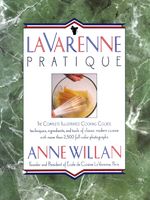French Bread & Sourdough
By Anne Willan
Published 1989
French bread is much imitated but rarely with complete success. A large number of factors contribute to its unique quality, including relatively soft flour (rather than the hard flour used for many white breads), slow rising with temperature and humidity carefully controlled, and the use of a steam oven. The bread is allowed to rise three times: the first time until tripled in bulk, the second time until doubled and the third time after being formed into long slender loaves. A baguette, literally “wand”, is the standard size, with thinner flûtes and even more slender ficelles often sliced for croûtes. Larger family loaves are called simply pains or “bread”. None of these breads has a shelf-life extending beyond a few hours. Traditional French bread is made with a cultured yeast and bacteria “starter” or leaven (Fr. levain), which may be a piece of dough saved from the previous batch, or a mixture of flour, water and yeast freshly mixed to make a sponge.
Become a Premium Member to access this page
Unlimited, ad-free access to hundreds of the world’s best cookbooks
Over 160,000 recipes with thousands more added every month
Recommended by leading chefs and food writers
Powerful search filters to match your tastes
Create collections and add reviews or private notes to any recipe
Swipe to browse each cookbook from cover-to-cover
Manage your subscription via the My Membership page
In this section
Part of
Advertisement
Related Recipes
-
-
-
-
Related Reference
-
-
-
-
Advertisement



